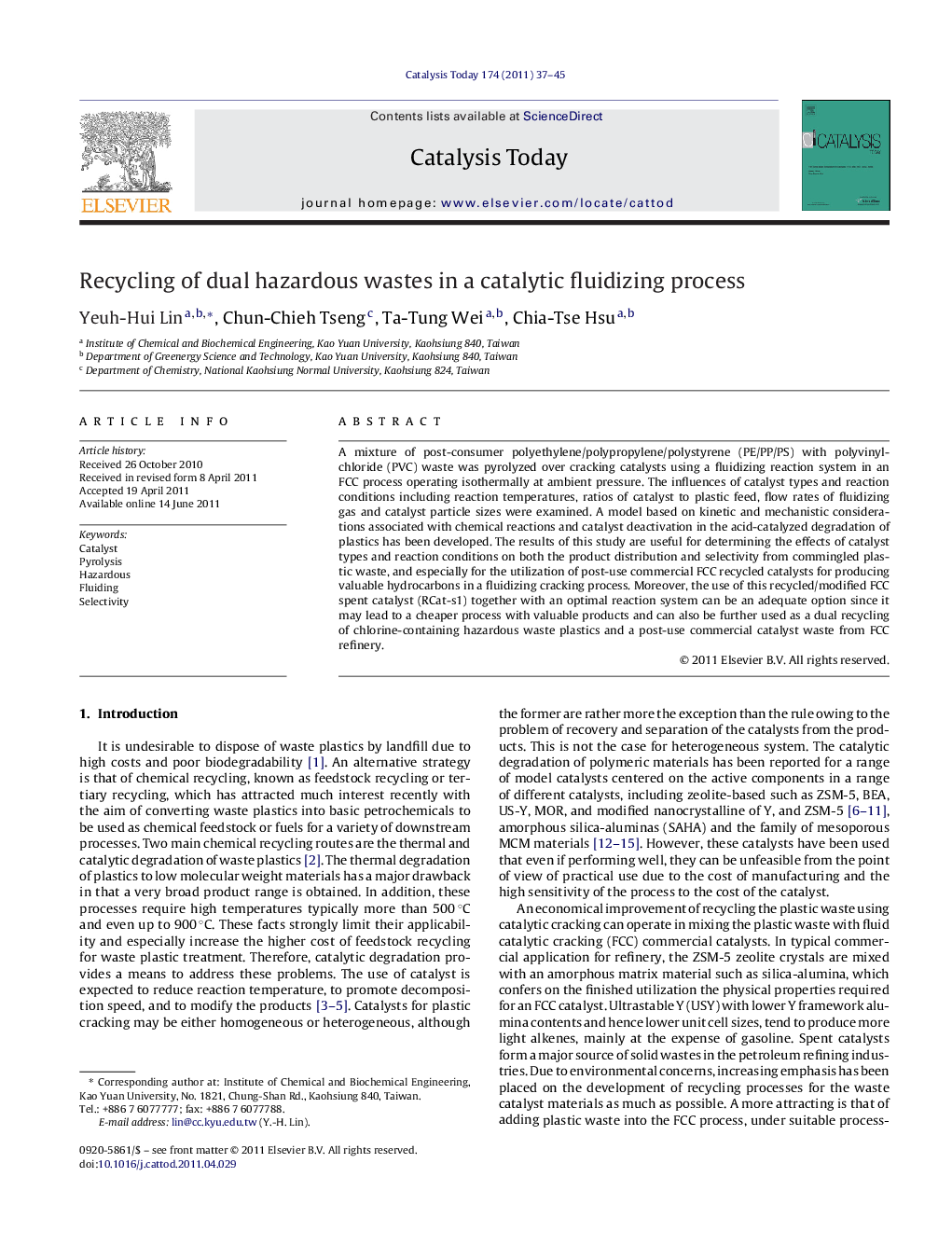| Article ID | Journal | Published Year | Pages | File Type |
|---|---|---|---|---|
| 55903 | Catalysis Today | 2011 | 9 Pages |
A mixture of post-consumer polyethylene/polypropylene/polystyrene (PE/PP/PS) with polyvinyl-chloride (PVC) waste was pyrolyzed over cracking catalysts using a fluidizing reaction system in an FCC process operating isothermally at ambient pressure. The influences of catalyst types and reaction conditions including reaction temperatures, ratios of catalyst to plastic feed, flow rates of fluidizing gas and catalyst particle sizes were examined. A model based on kinetic and mechanistic considerations associated with chemical reactions and catalyst deactivation in the acid-catalyzed degradation of plastics has been developed. The results of this study are useful for determining the effects of catalyst types and reaction conditions on both the product distribution and selectivity from commingled plastic waste, and especially for the utilization of post-use commercial FCC recycled catalysts for producing valuable hydrocarbons in a fluidizing cracking process. Moreover, the use of this recycled/modified FCC spent catalyst (RCat-s1) together with an optimal reaction system can be an adequate option since it may lead to a cheaper process with valuable products and can also be further used as a dual recycling of chlorine-containing hazardous waste plastics and a post-use commercial catalyst waste from FCC refinery.
Graphical abstractThe conversion of post-consumer commingled PE/PP/PS/PVC plastic waste to volatile hydrocarbon fuels was more than 80 wt% of feed in 30 min in the presence of a series of recycled and modified FCC spent catalysts by a fluidized-bed reactor. The use of appropriate reaction conditions coupled to a suitable catalyst can give the ability to control both product yield and distribution from hazardous polymer degradation, potentially leading to a cheaper process with more valuable products.Figure optionsDownload full-size imageDownload high-quality image (170 K)Download as PowerPoint slideHighlights► A mixture of PE/PP/PS/PVC waste in an FCC process has been successfully developed. ► Product streams varied markedly dependent on reaction conditions. ► A combined kinetic and mechanistic model giving chemical information was employed. ► This novel model provided an improvement to the empirical lumping techniques. ► The work gave an adequate option as a dual recycling of catalyst and plastic wastes.
